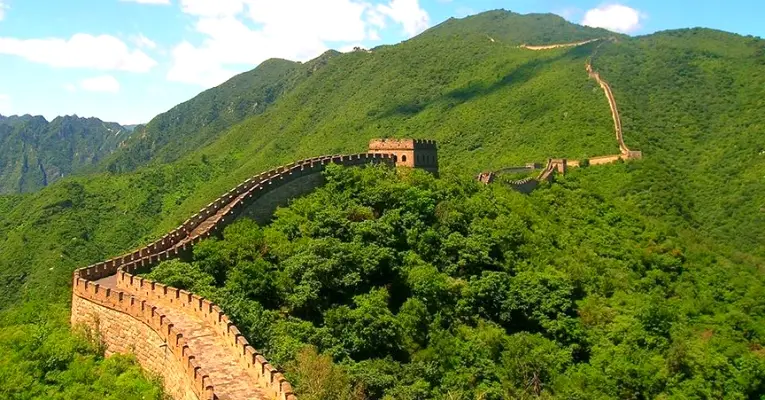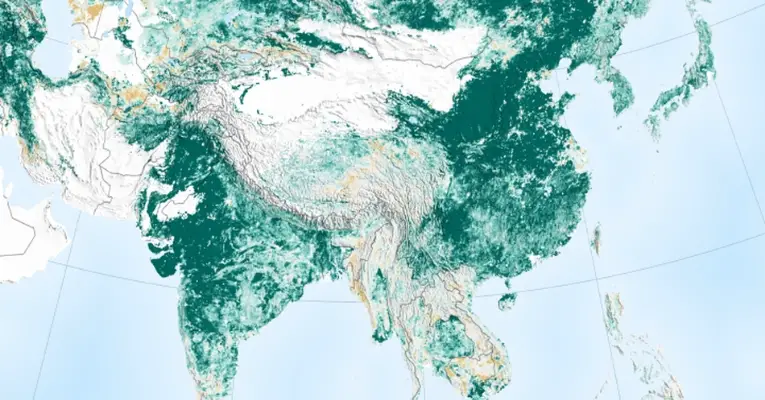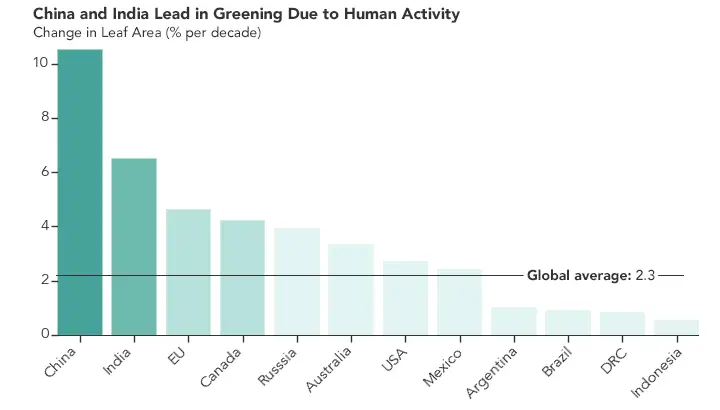The Earth Is Greener Than It Was 20 Years Ago, Thanks to China and India

While common horse-sense in the west may suggest that the fast-industrializing Global South would be responsible for making the earth a greyer, more polluted and desertified place, NASA satellites have discovered that the world’s two most populous countries – China and India – are, in fact, making the earth a greener place than it was two decades ago.

According to the new study released by NASA researchers in the journal Nature Sustainability, global green leaf areas in the world have increased by five percent since the beginning of the new millennium, an area equal to all of the Amazon rainforest.
The researchers relied on a study of maps that revealed the increase or decrease of green vegetation between the years 2000 and 2017. Using two satellites, the Moderate Resolution Imaging Spectroradiometer, or MODIS, provided high-resolution data and detailed imagery allowing researchers to view the details of the Earth’s vegetation on the level of about 1,600 feet on the ground.
Lead author Chi Chen of Boston University explained:
“China and India account for one-third of the greening, but contain only 9 percent of the planet’s land area covered in vegetation … That is a surprising finding, considering the general notion of land degradation in populous countries from overexploitation.”
A quarter of the new growth occurred in China. Since the mid-1990s, the People’s Republic of China launched an ambitious new project to turn back or ameliorate the effects of rampant pollution, erosion, smog, climate change and deforestation that were unleashed by a mixture of poor regulations and free-market reforms which saw the country become the de-facto “world’s workshop.”
Aiming to conserve and expand its forests, Beijing launched massive tree-planting mobilizations that called on all citizens and soldiers to plant trees as a matter of civic duty, leading to over 40 percent of the country’s greening. Formerly barren land was turned into dense forests, a measure meant to control floods that also soaked up massive amounts of carbon dioxide.
In India, which remains a largely agrarian society, much of the greening was the result of the intensive cultivation of crops. Such agricultural activity accounts for 82 percent of greening in India, versus 23 percent in China. Both countries have boosted their food production efforts to feed their large, urbanizing populations.

While China has been a green leader in the emerging east, India broke records in 2017 when volunteers planted 66 million saplings in about 12 hours.
Reforestation efforts will be crucial in regulating Earth’s carbon cycle and absorbing the fast-increasing carbon emissions resulting from human activities, which are largely driven by the global market’s unchecked and profit-driven pursuit of short-term economic growth, often with no regard for long-term environmental and ecological costs.
And while China’s reforestation efforts and moves to transition toward renewable energysources have been admirable, the country is still largely reliant on fossil fuels that make the country the biggest greenhouse gas emitter on the planet.
Scientists warn that the greening trend could change, or be reversed, due to multiple factors. For example, increased food production in India could grind to a halt if groundwater is depleted or polluted.
In the meantime, the loss of natural vegetation has proceeded apace in tropical regions such as Brazil, the South American Amazon, and Indonesia, impacting the biodiversity and long-term health that make green landscapes sustainable on a long-term basis.
However, the new report does offer a cause for hope to the researchers. Rama Nemani, a co-author of the study and research scientist at NASA’s Ames Research Center, said:
“Once people realize there is a problem, they tend to fix it … In the 1970s and 80s in India and China, the situation around vegetation loss was not good. In the 1990s, people realized it, and today things have improved. Humans are incredibly resilient. That’s what we see in the satellite data.”






Comments
Post a Comment